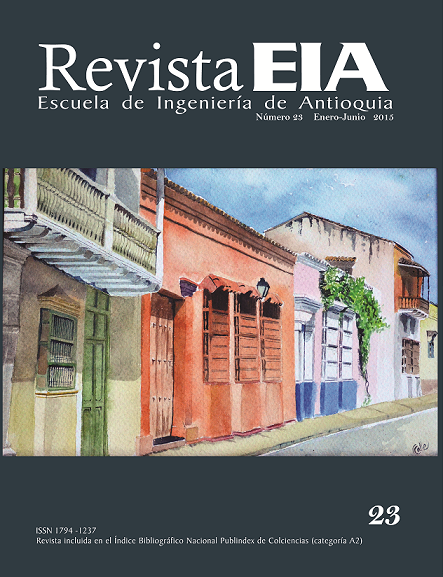MODELO MATEMÁTICO PARA LA UBICACIÓN DE ESTACIONES DE TRANSFERENCIA DE RESIDUOS SÓLIDOS URBANOS
MODELO MATEMÁTICO PARA LA UBICACIÓN DE ESTACIONES DE TRANSFERENCIA DE RESIDUOS SÓLIDOS URBANOS


This work is licensed under a Creative Commons Attribution-NonCommercial-NoDerivatives 4.0 International License.
Copyright statement
The authors exclusively assign to the Universidad EIA, with the power to assign to third parties, all the exploitation rights that derive from the works that are accepted for publication in the Revista EIA, as well as in any product derived from it and, in in particular, those of reproduction, distribution, public communication (including interactive making available) and transformation (including adaptation, modification and, where appropriate, translation), for all types of exploitation (by way of example and not limitation : in paper, electronic, online, computer or audiovisual format, as well as in any other format, even for promotional or advertising purposes and / or for the production of derivative products), for a worldwide territorial scope and for the entire duration of the rights provided for in the current published text of the Intellectual Property Law. This assignment will be made by the authors without the right to any type of remuneration or compensation.
Consequently, the author may not publish or disseminate the works that are selected for publication in the Revista EIA, neither totally nor partially, nor authorize their publication to third parties, without the prior express authorization, requested and granted in writing, from the Univeridad EIA.
Show authors biography
Resumen
Las Estaciones de Transferencia son instalaciones que están dedicadas al manejo y traslado de Residuos Sólidos Urbanos o Municipales, desde un vehículo a otro con mayor capacidad de carga que los transporta hasta su sitio de aprovechamiento o disposición final. El objeto central de esta investigación es representar la localización de este tipo de instalaciones a través de un modelo de programación lineal entera mixta, que tiene en cuenta las principales características de las estaciones, como la capacidad total y la capacidad de recuperación de materiales. La función objetivo formulada busca reducir al mínimo los costos fijos de apertura, los costos de transporte y los costos de operación, evaluados en el momento actual a través de una función de costo presente equivalente.
Abstract
Transfer Stations are facilities dedicated to management, and solid waste transfer of a vehicle to another with greater capacity, which transports them to their place of use or disposal. The main purpose of the research is to represent the location of these kind facilities through a model of mixed integer linear programming, which consider different characteristics of stations such as total capacity and materials recovery. Total costs minimization is the main objective. To do this, we minimize opening fixed costs, transportation costs and operating costs evaluated at the current time through a function of present cost equivalent.
Resumo
As estações de transferência são instalações que se dedicam ao manuseio e transporte de resíduos sólidos urbanos ou municipais de um veículo para outro com maior capacidade de transporte para o local de utilização ou eliminação. O objetivo central deste trabalho é o de representar a localização dessas instalações através de um modelo de programação linear inteira mista, que leva em conta as características principais das estações, como a capacidade total e resistência dos materiais. A função objetiva formulada visa minimizar os custos fixos de abertura, os custos de transporte e os custos operacionais, avaliados no momento através de uma função de custo presente equivalente.
Article visits 1203 | PDF visits 266
